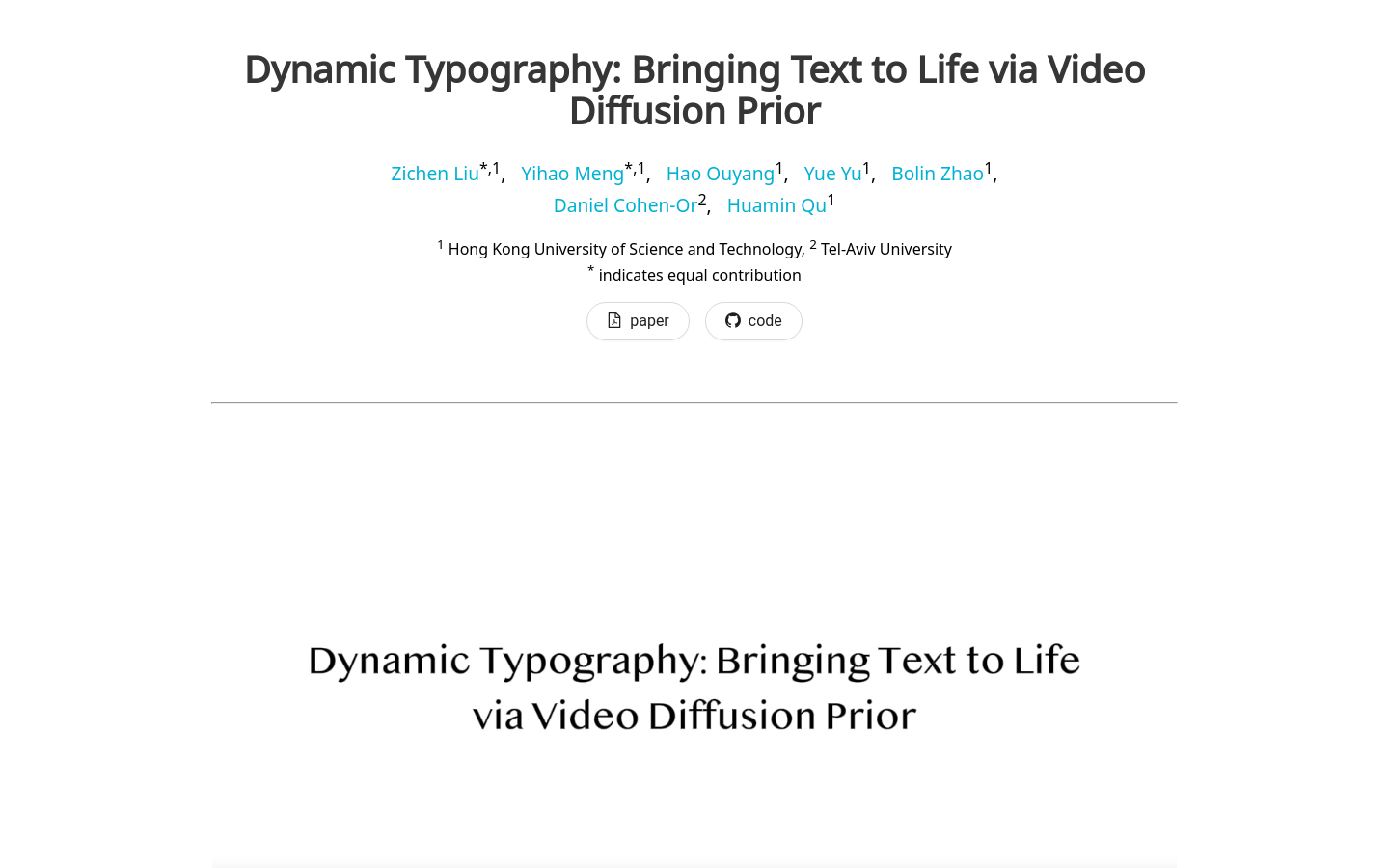

Dynamic Typography
Overview :
Dynamic Typography is an automated text animation solution that combines the challenges of semantic conveying and dynamic motion. It utilizes vector graphics representation and an end-to-end optimization framework to transform letters into basic shapes via neural displacement fields and apply frame-by-frame motion, enhancing consistency with the intended textual concept. Through shape preservation techniques and perceptual loss regularization, it maintains readability and structural integrity throughout the animation. Our method demonstrates generalizability across various text-to-video models and highlights the superiority of our end-to-end approach, which may outperform individual task-specific methods. Through both quantitative and qualitative evaluations, we demonstrate the effectiveness of our framework in generating coherent text animations that faithfully interpret user prompts while preserving readability.
Target Users :
Suitable for various scenarios where text needs to be expressed dynamically, such as advertisements, presentations, educational videos, etc.
Use Cases
Romance: A couple walks hand-in-hand, with the girl following the boy
Passion: Two people kiss each other, with one person cupping the other's chin
Flame: Two soldiers fire guns, one standing and the other kneeling
Camel: A camel steadily traverses a desert
Features
Transforms static text into dynamic experiences
Injects vibrant motion based on user prompts
Utilizes vector graphics and an end-to-end optimization framework
Maintains readability and structural integrity throughout the animation
Featured AI Tools

Sora
AI video generation
17.0M

Animate Anyone
Animate Anyone aims to generate character videos from static images driven by signals. Leveraging the power of diffusion models, we propose a novel framework tailored for character animation. To maintain consistency of complex appearance features present in the reference image, we design ReferenceNet to merge detailed features via spatial attention. To ensure controllability and continuity, we introduce an efficient pose guidance module to direct character movements and adopt an effective temporal modeling approach to ensure smooth cross-frame transitions between video frames. By extending the training data, our method can animate any character, achieving superior results in character animation compared to other image-to-video approaches. Moreover, we evaluate our method on benchmarks for fashion video and human dance synthesis, achieving state-of-the-art results.
AI video generation
11.4M














